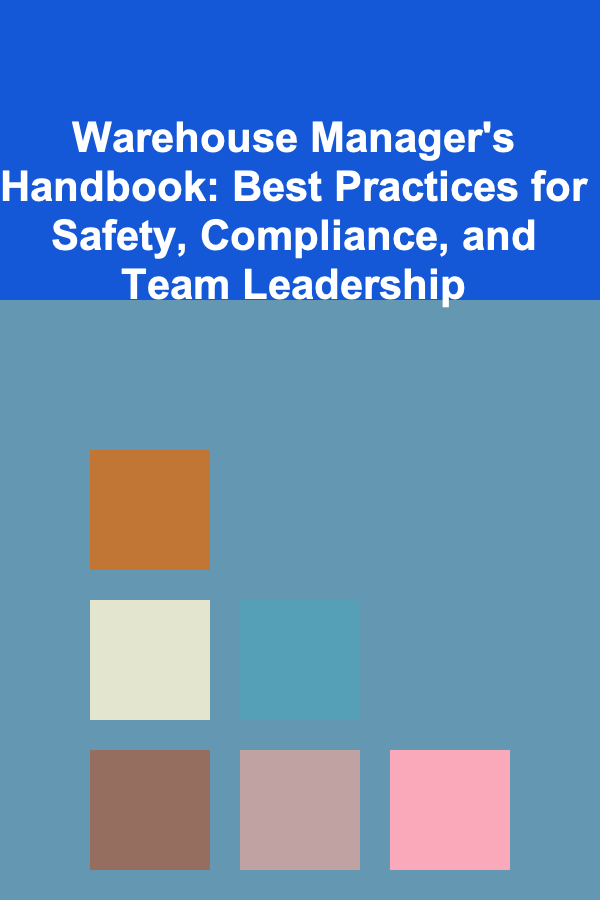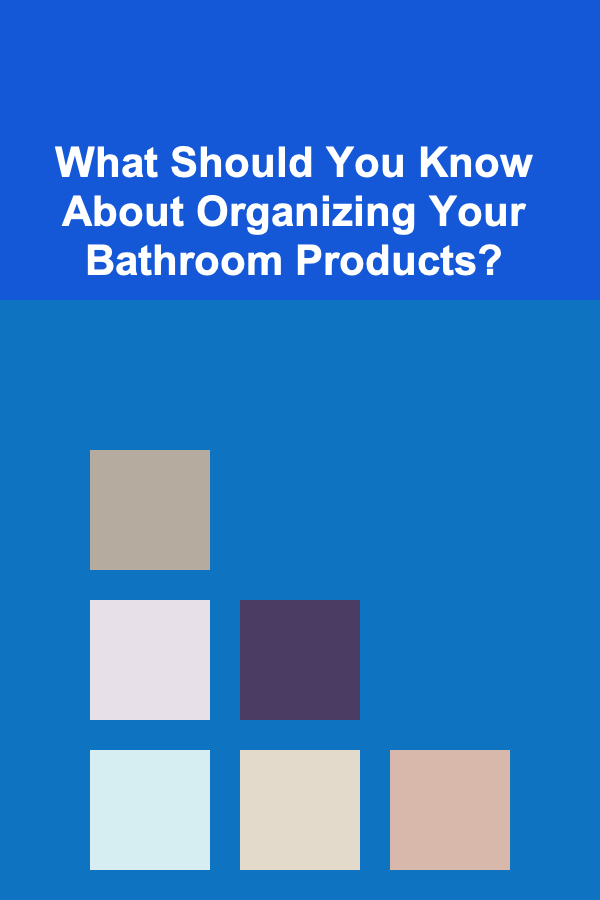
How to Ace Your Internship Application: A Comprehensive Checklist
ebook include PDF & Audio bundle (Micro Guide)
$12.99$8.99
Limited Time Offer! Order within the next:
Not available at this time

Internships play a crucial role in shaping your career. They provide real-world experience, offer insights into industries, and often serve as a gateway to full-time employment. However, landing an internship, especially at top companies, is not easy. The competition is fierce, and it's essential to make your application stand out from the crowd. In this article, we will walk you through a comprehensive checklist for acing your internship application. From preparing your resume to nailing the interview, we will cover all aspects that will help you land that dream internship.
Understand the Internship Role and Company
Before you start the application process, it's important to understand what you're applying for. Researching the role and company can help you tailor your application to meet the specific needs of the employer. Here's how you can get started:
A. Research the Role
Internship roles can vary widely, even within the same company. Make sure you understand the expectations, responsibilities, and required skills for the internship. Look for details in the job description and pay close attention to the key qualifications. Consider the following:
- What skills are required?
- What are the main responsibilities?
- What projects or tasks will you be working on?
- Is the internship paid or unpaid?
Having this information will allow you to align your application with the company's needs and demonstrate your readiness for the role.
B. Research the Company
Understanding the company you're applying to is equally important. Companies want interns who are not only qualified but also passionate about their organization and industry. Look into:
- Company values and culture: What is the company's mission? Do you align with their values?
- Recent projects or accomplishments: What notable things has the company done recently? What projects have they been involved in?
- Work environment: Is the company known for its innovative, collaborative, or structured work culture? How can you contribute to it?
Tailor your application to highlight how you can be a good fit for their culture and contribute to their goals.
Prepare a Standout Resume
Your resume is the first impression you'll make on a potential employer, and it should reflect both your skills and your enthusiasm for the role. Below are some key strategies to ensure that your resume grabs the attention of hiring managers.
A. Focus on Relevant Skills and Experiences
Make sure that your resume highlights experiences and skills that are directly relevant to the internship role. If you have prior internships, volunteer work, or academic projects that align with the internship, prioritize them. Use bullet points to concisely describe what you accomplished, what skills you applied, and what outcomes you achieved.
B. Customize Your Resume
Every internship is different, so it's crucial to customize your resume for each position. This means:
- Adjusting the summary or objective section to reflect why you're interested in that specific company and role.
- Emphasizing the skills and experiences that match the job description.
- Using keywords from the internship posting to help your resume get past Applicant Tracking Systems (ATS), which many companies use to filter resumes.
C. Quantify Your Achievements
When possible, use numbers and data to show your accomplishments. For example, instead of just saying you "assisted in organizing events," you could say, "Assisted in organizing a fundraiser that raised $5,000 for charity."
D. Keep It Simple and Professional
Your resume should be easy to read, so use a clean and professional layout. Limit your resume to one page if possible, and avoid using overly fancy fonts or colors. Make sure your contact information is at the top, and proofread it multiple times for any typos or grammatical errors.
Craft a Compelling Cover Letter
While your resume provides the facts, your cover letter gives you the chance to show your personality and passion. A well-crafted cover letter can make a significant difference, as it allows you to explain why you are the best candidate for the internship and how you can add value to the company.
A. Tailor Your Cover Letter
Just like your resume, your cover letter should be customized for each internship. Here's how to do it effectively:
- Introduction: Start with a strong introduction that mentions the internship you're applying for and why you're excited about it.
- Show passion: Explain why you are interested in the company and the role. What excites you about their work or culture?
- Highlight relevant skills: Use specific examples from your resume to show how your skills and experiences align with the internship.
- Conclude with a call to action: End your cover letter by expressing your desire to discuss the opportunity further and providing your contact details.
B. Keep It Concise and Engaging
Your cover letter should be no more than one page long. Focus on keeping your language professional yet engaging. Use positive language, and avoid generic statements that could apply to any internship or company.
C. Proofread
Mistakes in a cover letter can leave a negative impression. Proofread your cover letter carefully to ensure it's free of spelling, grammar, and punctuation errors.
Prepare for the Interview
Once your resume and cover letter get you noticed, the next step is the interview. Many candidates find the interview process the most challenging part of the internship application process, but with proper preparation, you can succeed.
A. Practice Common Interview Questions
There are several questions that interviewers tend to ask during internship interviews. Practice answering these questions confidently and thoroughly:
- Why are you interested in this internship?
- What skills do you bring to this position?
- Tell me about a time you worked in a team.
- What are your strengths and weaknesses?
- Where do you see yourself in five years?
- Why do you want to work for this company?
Your answers should be specific and tie back to your experiences, making you seem like a great fit for the role.
B. Prepare Questions for the Interviewer
At the end of most interviews, the interviewer will ask if you have any questions. Always have a few questions prepared. This shows your interest in the company and the role. Some good questions to ask include:
- What are the most important qualities you look for in an intern?
- Can you tell me more about the team I'll be working with?
- What kind of projects will I be working on during the internship?
- What is the typical career path for someone who starts as an intern at this company?
C. Research the Interview Format
Internship interviews may be conducted in different formats, such as in-person, over the phone, or via video call. Make sure you know the format in advance so you can prepare accordingly:
- In-person interview: Dress professionally, be on time, and bring extra copies of your resume.
- Phone interview: Find a quiet, comfortable space for the call, and have a copy of your resume and the job description in front of you.
- Video interview: Test your equipment ahead of time, ensure you have a good internet connection, and choose a well-lit space with a neutral background.
D. Demonstrate Enthusiasm
Internship candidates who are passionate about the role and the company stand out. Even if you don't have all the skills they are looking for, showing your enthusiasm for learning can go a long way.
Follow Up After the Interview
After the interview, send a thank-you email to express your appreciation for the interviewer's time and reiterate your interest in the position. This is also a chance to briefly restate why you're a good fit for the internship.
A. Timing of Follow-Up
Send the thank-you email within 24 hours of the interview. This shows you are prompt and appreciative of the opportunity. Keep the tone professional and concise.
B. Personalize Your Message
In your thank-you email, mention something specific from the interview that reinforces why you're excited about the internship. This makes your message more personal and memorable.
Additional Tips for a Successful Application
A. Network
Networking can be an essential part of the internship search process. Connect with people in your field, attend career fairs, and engage with alumni or professionals on LinkedIn. A personal referral or connection can significantly improve your chances of landing an internship.
B. Apply Early
Internship deadlines can vary, but it's always a good idea to apply as early as possible. Many top companies recruit interns months in advance. Applying early can increase your chances of securing an interview.
C. Be Persistent
Don't get discouraged if you don't get an internship on your first attempt. If you're not selected, request feedback, learn from your experience, and keep applying to other opportunities. Persistence pays off.
Conclusion
Acing your internship application requires more than just sending out a generic resume. It's about showcasing your skills, enthusiasm, and fit for the company and role. By thoroughly researching the role, crafting a personalized application, preparing for interviews, and following up professionally, you'll increase your chances of landing an internship that provides valuable experience and sets the stage for future career success.

How to Create Stunning Greeting Card Designs with Simple Tools
Read More
How to Develop a Routine for Regular Paperwork Maintenance
Read More
How to Make a Checklist for Painting and Finishing Your Home Renovation
Read More
How to Organize Your Pet's Supplies for Convenience
Read More
Warehouse Manager's Handbook: Best Practices for Safety, Compliance, and Team Leadership
Read More
What Should You Know About Organizing Your Bathroom Products?
Read MoreOther Products

How to Create Stunning Greeting Card Designs with Simple Tools
Read More
How to Develop a Routine for Regular Paperwork Maintenance
Read More
How to Make a Checklist for Painting and Finishing Your Home Renovation
Read More
How to Organize Your Pet's Supplies for Convenience
Read More
Warehouse Manager's Handbook: Best Practices for Safety, Compliance, and Team Leadership
Read More